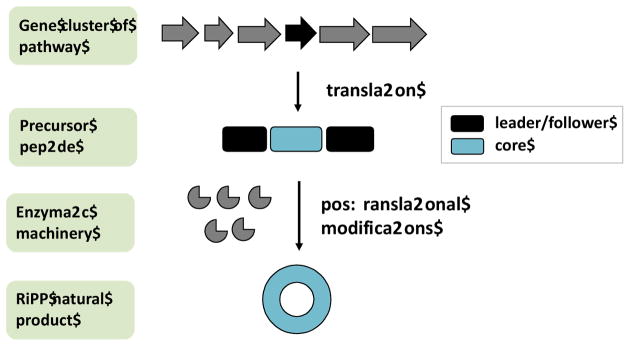Figure 1.
A simple schematic of RiPP biosynthesis, showing that the biosynthetic machinery is genetically encoded. The precursor peptide substrate gene is shown in black, which is flanked by multiple posttranslational modification enzymes and other proteins (shown in grey) responsible for the transformation of the precursor peptide substrate into the final product. The precursor peptide itself can be differentiated into the core sequence (that matures into the final product) and a leader/follower sequence that often carry enzyme recognition elements among others.

